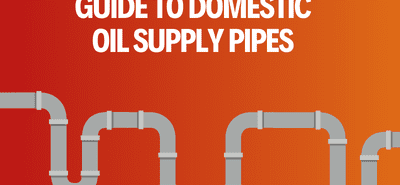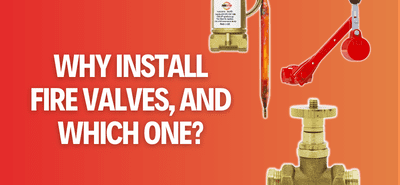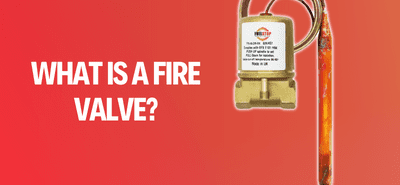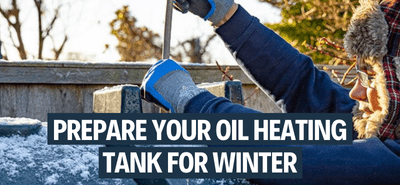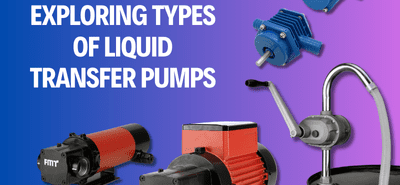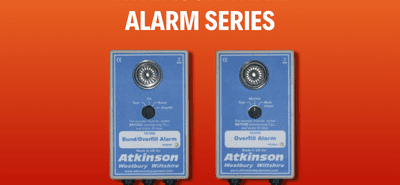Guide To Oil Heating
Explore the world of oil heating and learn how to efficiently utilise this heating method

Understanding Oil Heating Systems
Oil heating systems are a popular choice for rural homeowners or businesses who need an efficient and reliable way to heat their homes. In fact, in the UK, about 1.15 million households rely on heating oil systems. These systems use heating oil (kerosene) as a fuel source, which is burned to produce heat. The heat is then distributed throughout the property via a network of pipes and radiators.
Oil tends to be used in the more rural areas as many homes and businesses don’t have access to the gas mains on the National Grid. As a result, instead of using gas for central heating, these properties depend on heating oil to provide warmth and hot water. These properties will have an oil tank situated outside for storing the oil.
How does an oil burner work?
One of the main components of an oil heating system is the oil burner. This is the device that ignites the oil and produces the heat. Once the domestic oil is ignited, the resulting hot exhaust gases flow through a heat exchanger, typically a copper coil. This process transfers energy to the water circulating through it, heating it up. The warmed water is then distributed throughout the house via convection or radiant heaters such as radiators or underfloor heating systems to provide warmth into the room. The same heating appliance also provides the hot water used by taps and non electric showers.
Heating oil storage tank
Another important component of an oil heating system is the oil tank. This is where the oil is stored until it is needed. It is important to regularly check the oil level in the tank and schedule regular deliveries to ensure a constant supply of fuel. There are various types of tanks available to choose from, and it is important to set up your tank that deters heating oil theft, which we will cover later in this blog. There are also OFTEC oil tank safety regulations to follow.
Benefits of Oil Heating
There are several benefits to using oil heating in your home. One of the main advantages is that modern oil heating systems are highly energy efficient. Oil burns hotter than gas or electrical systems so will heat up the home much quicker minimising the use of natural resources. A room can be heating quicker and maintain a consistent temperature, which can help reduce energy consumption and lower heating costs.
Oil heating systems are also known for their durability and longevity. With proper maintenance, an oil heating system can last for many years, providing reliable heat for your home or premises.


Maintenance Tips for Oil Heating Systems
Proper maintenance is essential to ensure the optimal performance and longevity of your oil heating system. Here are some maintenance tips to keep in mind:
– To ensure your heating system is working efficiently and safely, you should have your boiler serviced and tank checked regularly by a qualified OFTEC engineer.
– Clean or replace the oil filter regularly to prevent clogs and maintain the efficiency of your system.
– Inspect the oil tank for any signs of leaks or damage. This includes the wall of the tank, individual components, and surrounding area. Common things to look out for include rust, cracks, bulging or major dents.
– Keep the area around the oil tank clear of debris and vegetation to prevent damage and ensure easy access for maintenance.
– Monitor the oil level in the tank and schedule regular deliveries to ensure a continuous supply of fuel. You can do this with our c
ontents gauges. Your tank gauge is likely to be one of the following types:
- Sight Gauge (single skin tanks only) – for bottom outlet tanks, a self closing pull to read valve or a push button gauge can be used. Our Atkinson Tankmaster has a built-in sight gauge that has many other features making it a ‘4-in-1’ sight gauge. This includes a:
- Control Valve to turn on or off oil supply manually. The hand wheel also incorporates a soldered section which will isolate the oil supply in case of fire near the tank(NB: this is an additional fire safety aspect and is not a mandatory fire valve)
- Sight Gauge allows inspection of tank contents level – Self-Closing pull to read valve ;
- Integral Filter to ensure only clean oil is allowed to pass from the tank
- 3/8” outlet supplied with 10mm compression and copper pipe support sleave as standard
- float gauge – Provides an economy simple mechanical and automatic reading at the tank via a float, string and needle gauge.
- Hydrostatic gauge – available in mechanical manual or electric automatic versions these pressurise a capillary tube weighted to the bottom of the tank with air. The gauge then reads the hydrostatic pressure of the oil level in the tank and displays this on the gauge face as either a % with a needle gauge or, in the case of the electric version, an LCD display with various options such as litres or height.
By following these maintenance tips, you can keep your oil heating system in top condition and avoid any potential issues.
Ensuring that your oil tank is secure against theft
Oil theft is a concern for many homeowners with oil heating systems. To ensure that your oil tank is secure against theft, there are many measures you can take, for example, installing a locking filler cap on your oil tank to prevent unauthorised access.
– Place the oil tank in a well-lit area that is visible from your home or neighbouring properties. If possible, position the tank out of sight from the road.
– Consider installing security cameras or motion sensor lights near the oil tank to deter potential thieves.
– Keep the area around the oil tank clear of any hiding spots, such as bushes or tall grass.
– Consider joining a neighbourhood watch program or forming a community group to keep an eye out for any suspicious activities.
Find our blog on ‘Protecting Your Heating Oil From Theft’ for more detail.






